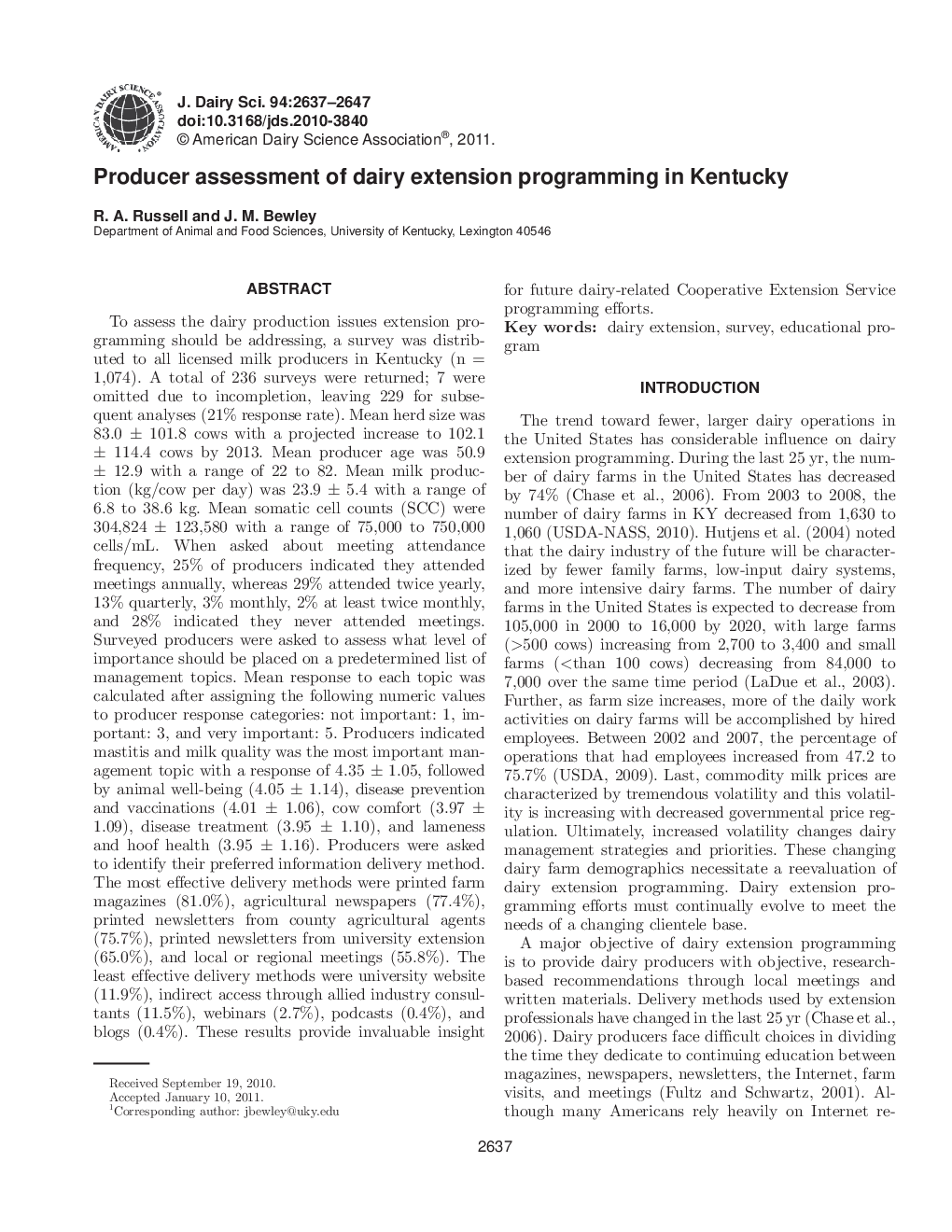| Article ID | Journal | Published Year | Pages | File Type |
|---|---|---|---|---|
| 5789689 | Journal of Dairy Science | 2011 | 11 Pages |
Abstract
To assess the dairy production issues extension programming should be addressing, a survey was distributed to all licensed milk producers in Kentucky (n = 1,074). A total of 236 surveys were returned; 7 were omitted due to incompletion, leaving 229 for subsequent analyses (21% response rate). Mean herd size was 83.0 ± 101.8 cows with a projected increase to 102.1 ± 114.4 cows by 2013. Mean producer age was 50.9 ± 12.9 with a range of 22 to 82. Mean milk production (kg/cow per day) was 23.9 ± 5.4 with a range of 6.8 to 38.6 kg. Mean somatic cell counts (SCC) were 304,824 ± 123,580 with a range of 75,000 to 750,000 cells/mL. When asked about meeting attendance frequency, 25% of producers indicated they attended meetings annually, whereas 29% attended twice yearly, 13% quarterly, 3% monthly, 2% at least twice monthly, and 28% indicated they never attended meetings. Surveyed producers were asked to assess what level of importance should be placed on a predetermined list of management topics. Mean response to each topic was calculated after assigning the following numeric values to producer response categories: not important: 1, important: 3, and very important: 5. Producers indicated mastitis and milk quality was the most important management topic with a response of 4.35 ± 1.05, followed by animal well-being (4.05 ± 1.14), disease prevention and vaccinations (4.01 ± 1.06), cow comfort (3.97 ± 1.09), disease treatment (3.95 ± 1.10), and lameness and hoof health (3.95 ± 1.16). Producers were asked to identify their preferred information delivery method. The most effective delivery methods were printed farm magazines (81.0%), agricultural newspapers (77.4%), printed newsletters from county agricultural agents (75.7%), printed newsletters from university extension (65.0%), and local or regional meetings (55.8%). The least effective delivery methods were university website (11.9%), indirect access through allied industry consultants (11.5%), webinars (2.7%), podcasts (0.4%), and blogs (0.4%). These results provide invaluable insight for future dairy-related Cooperative Extension Service programming efforts.
Keywords
Related Topics
Life Sciences
Agricultural and Biological Sciences
Animal Science and Zoology
Authors
R.A. Russell, J.M. Bewley,
